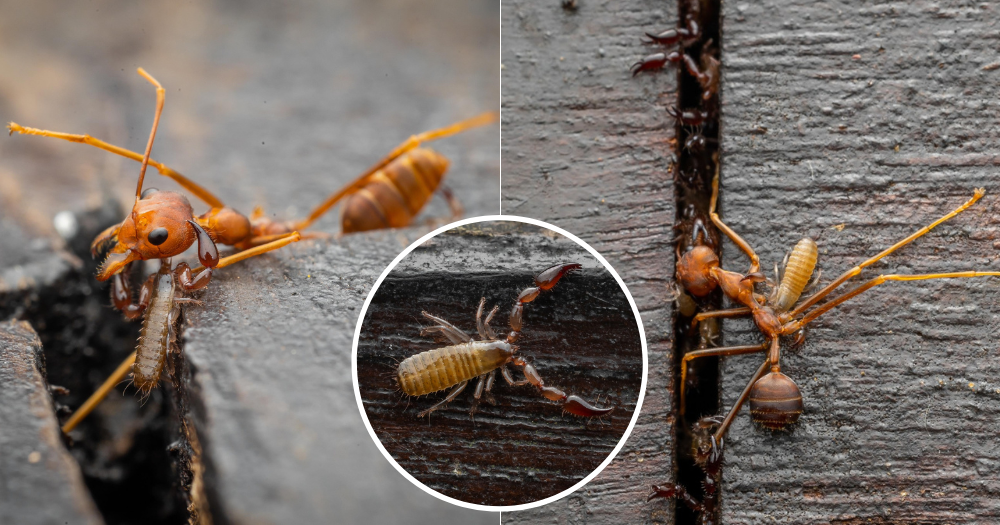The next time you are at the Pasir Ris Park mangrove boardwalk trying hard but failing to spot any wildlife action, try looking down instead.
You might just catch a glimpse of nature's wildest side, just like photographer Daryl Tan, 34, did when he was out for a stroll there on Jul. 4.
Nature in action
In a post on the Nature Society (Singapore) Facebook group on Jul. 5, Tan shared photographs of dramatic scenes of Weaver ants caught in a struggle for their lives as they are ambushed by a smaller critter.
Speaking to Mothership, Tan said signs of death in the form of empty Weaver ant carcasses littered the boardwalk.
While spiders might be the culprit, Tan knew that the carcasses could also be the work of pseudoscorpions, which he had spotted at the boardwalk in the past.
Tan shared that he was actually at the park that afternoon to photograph two Shore pit vipers, but later decided to turn his attention to the world beneath his feet.
True enough, danger lurked between the gaps in the planks of the boardwalk.
A number of pseudoscorpions laid in wait like soldiers along a trench, waiting for the moment to strike.
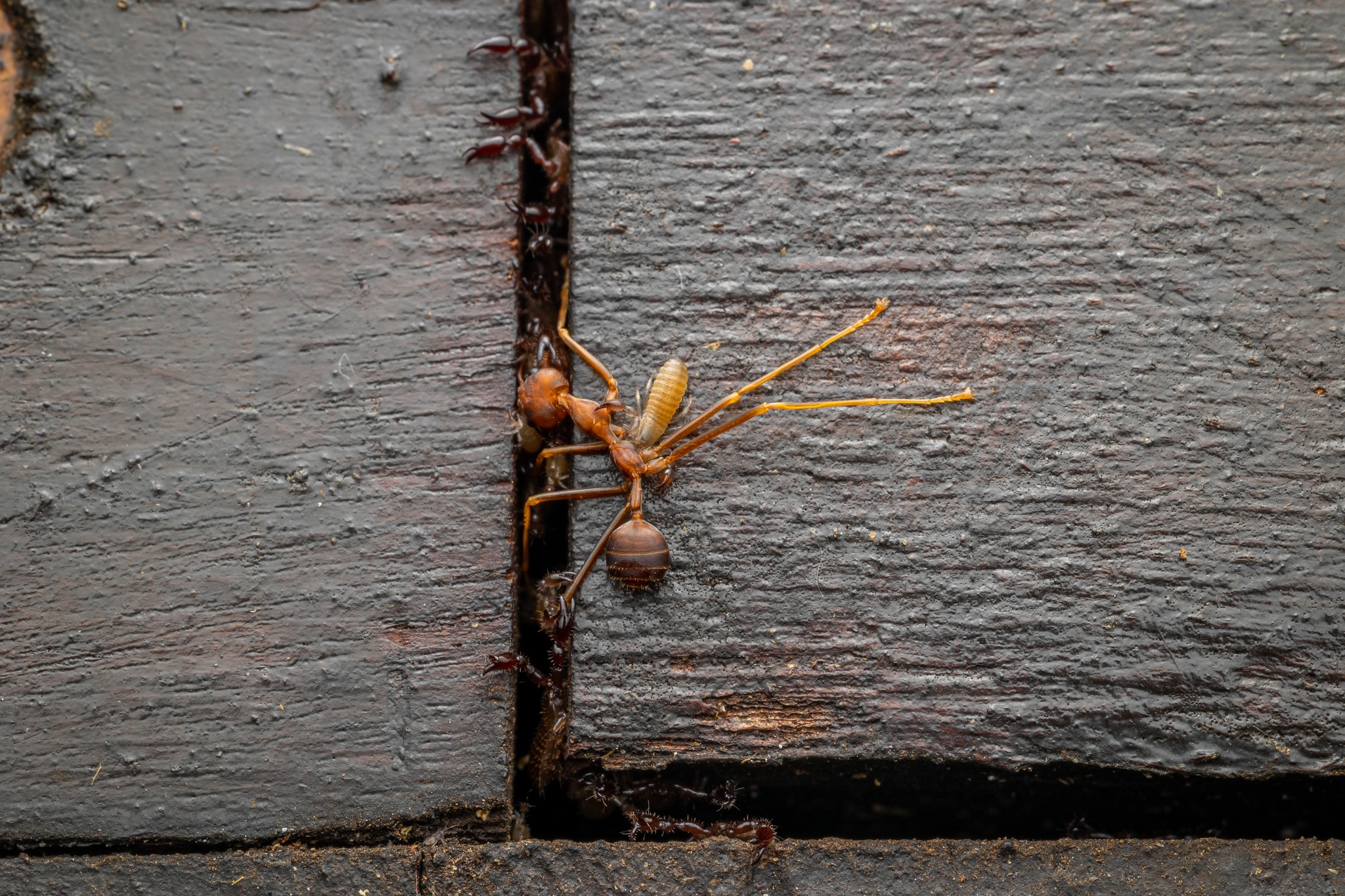 Photo courtesy of Daryl Tan.
Photo courtesy of Daryl Tan.
They hold their venomous pincers over the edge, turning them into the perfect booby trap.
Once an unsuspecting prey, like a Weaver ant, ventures too close, the lurking pseudoscorpions attack en masse.
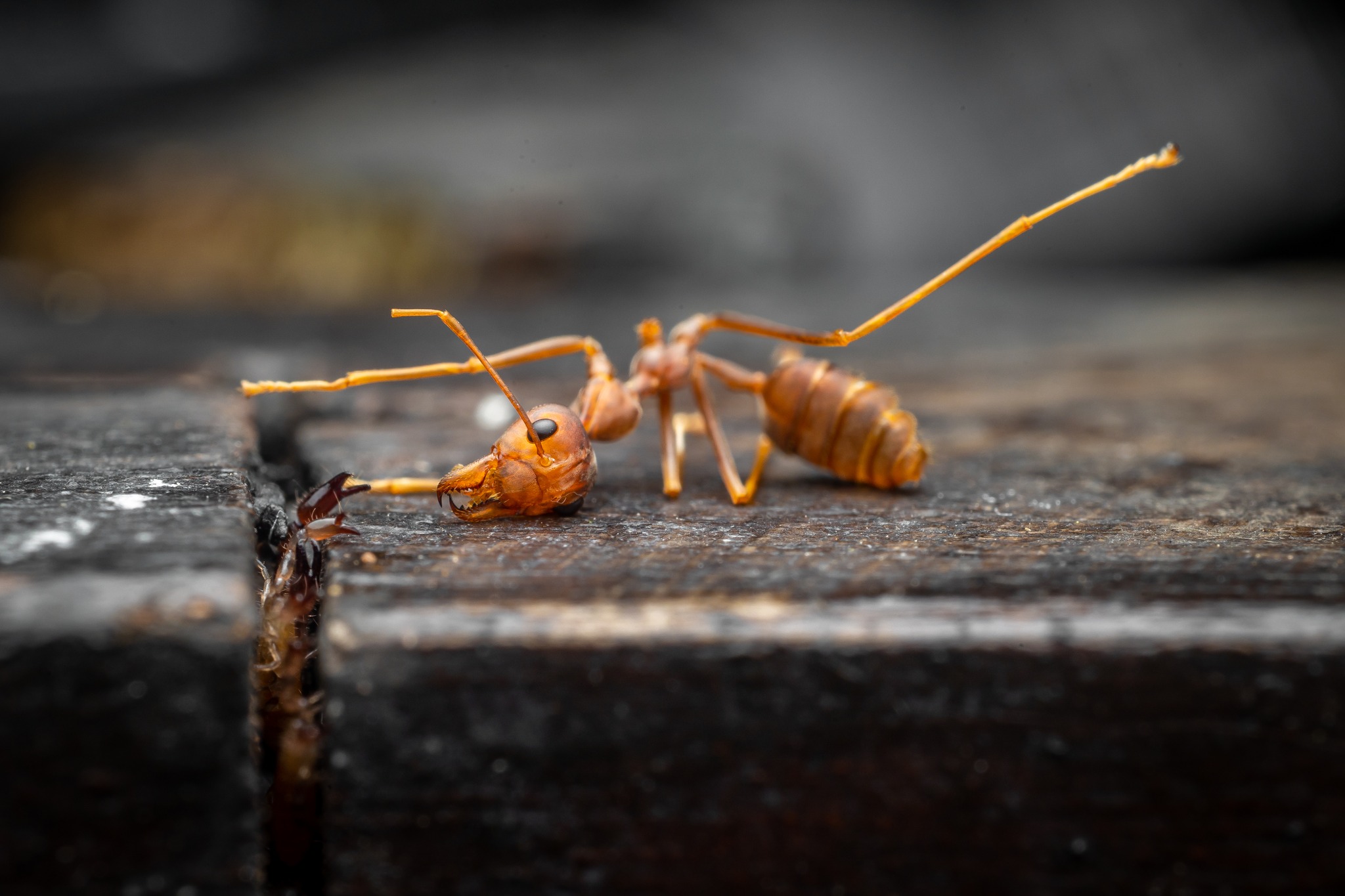 Photo courtesy of Daryl Tan.
Photo courtesy of Daryl Tan.
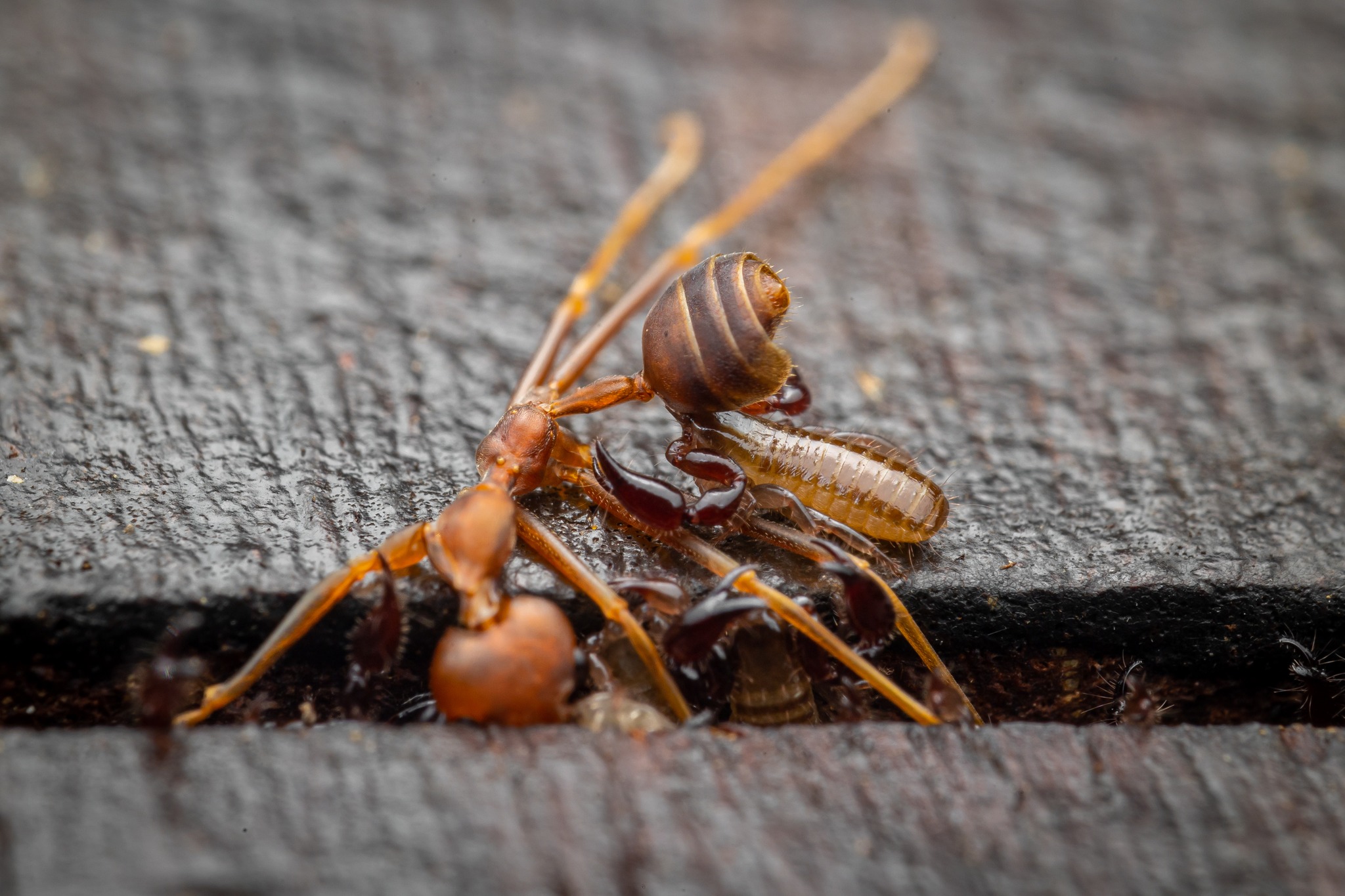 Photo courtesy of Daryl Tan.
Photo courtesy of Daryl Tan.
This hunting technique proved effective. According to Tan, in a 30m stretch of the boardwalk, he saw eight Weaver ant corpses.
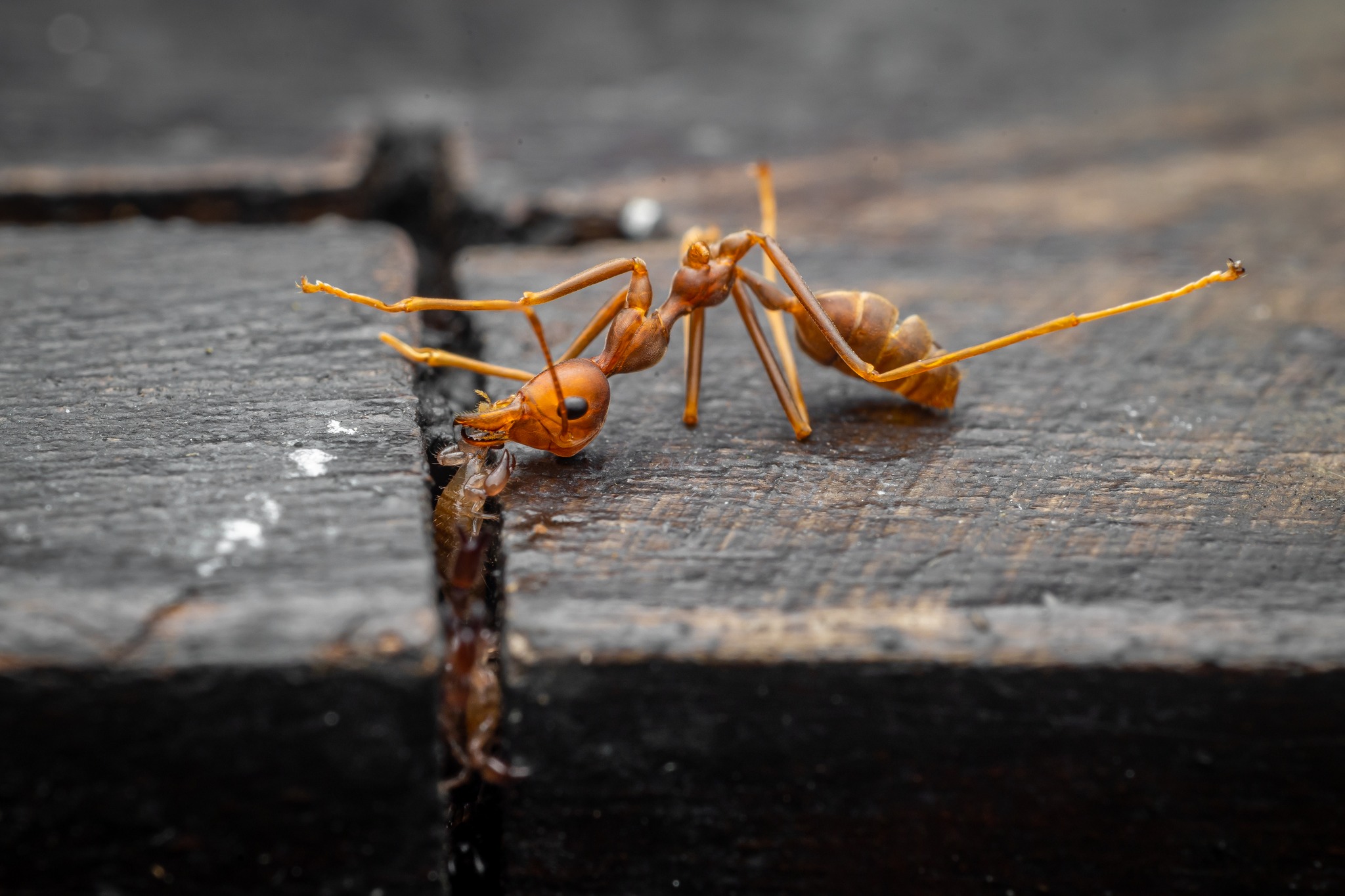 Photo courtesy of Daryl Tan.
Photo courtesy of Daryl Tan.
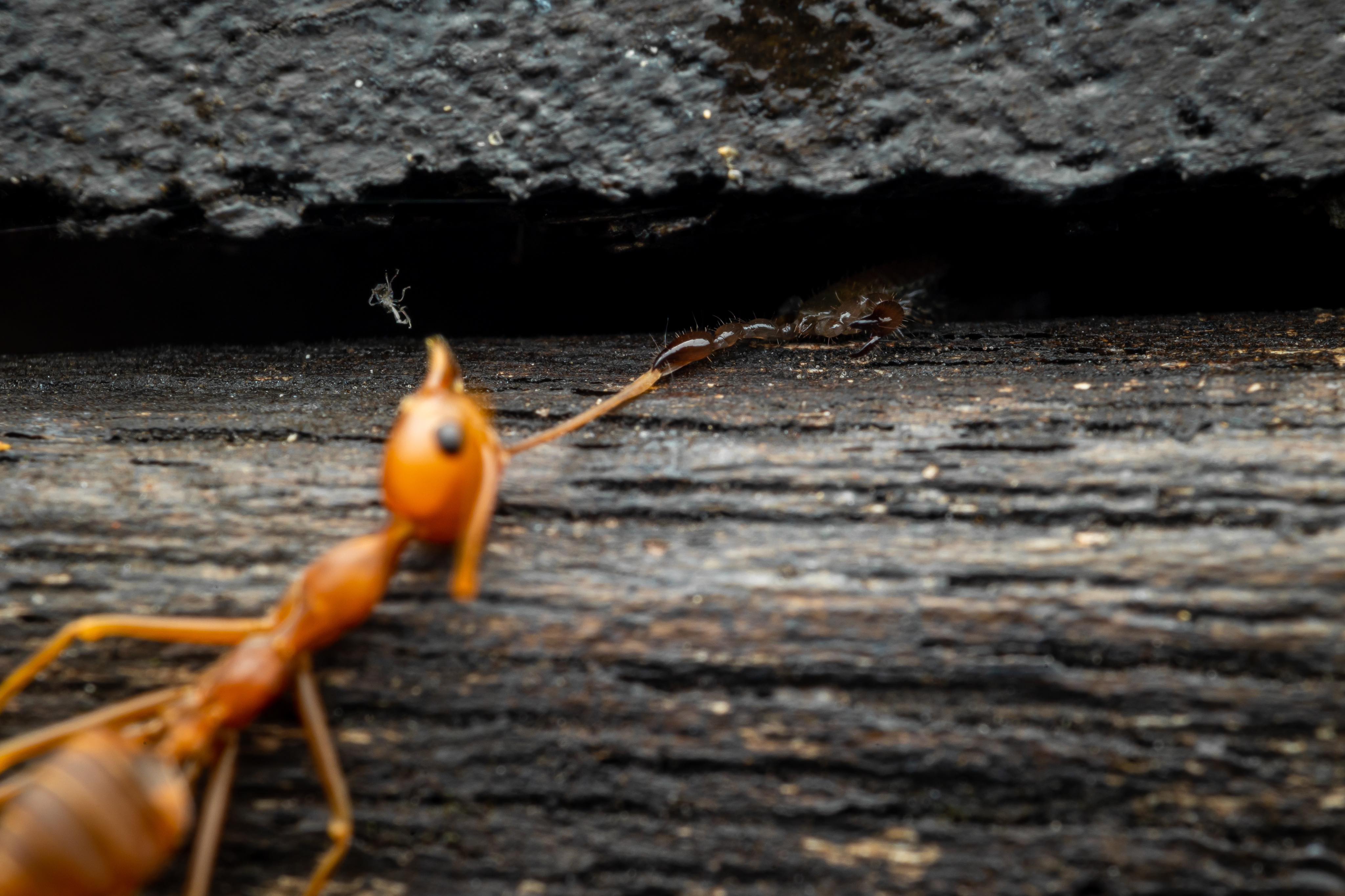 Photo courtesy of Daryl Tan.
Photo courtesy of Daryl Tan.
"Interestingly, most of these corpses were in pairs," Tan shared.
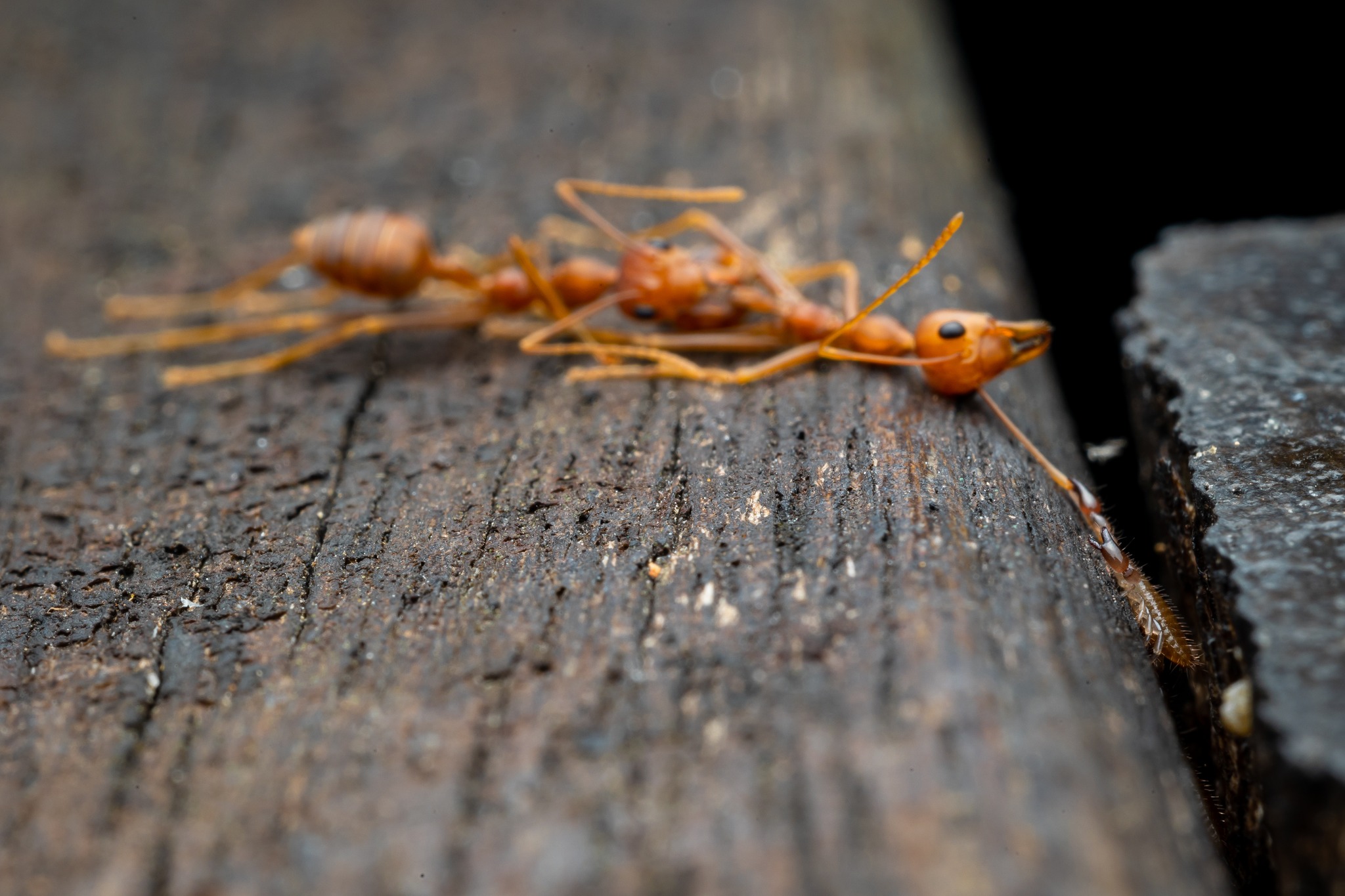 Photo courtesy of Daryl Tan.
Photo courtesy of Daryl Tan.
"Perhaps the ant's behaviour of wanting to rescue its fallen buddies is one possible explanation why the ant corpses were often found in pairs. While it is rescuing a trapped ant, it ends up falling victim to other pseudoscorpions," the photographer surmised.
Tan's own narration of his series of photos makes them even more captivating.
Read Tan's narration and scroll through his photos again for maximum effect.
"Imagine you are out foraging on the boardwalk with your fellow ants. You are ever so alert, vigilantly scanning your surroundings for predators. You see nothing and you think it is safe. But there is never nothing. As you step across a gap in the ground, you feel something grab you. And then another. And another. Your legs, your body, even your antennae. In a blink, you are held down. You try to struggle but it is no use. You cannot move. You look around and you see some of your buddies in the same predicament. You start to panic. Suddenly, you feel a pull on your body. You look to see your buddy trying to pull you free. But try as he might, he cannot get you free. You will yourself to move, to help, but your body does not listen to you anymore. Your buddy stops pulling. He is caught in the same situation too! As he is fighting his own battle, you feel the fight leaving you. It is the end. And there is nothing you can do about it."
 Photo courtesy of Daryl Tan.
Photo courtesy of Daryl Tan.
 Photo courtesy of Daryl Tan.
Photo courtesy of Daryl Tan.
 Photo courtesy of Daryl Tan.
Photo courtesy of Daryl Tan.
Tan added that if readers wanted to look for these tiny critters, they would have to look closely.
"These guys are a lot smaller than they look in pictures," Tan advised.
Pseudoscorpions
Pseudoscorpions, also known as false scorpions, are arachnids and not insects. This makes them close cousins to spiders and actual scorpions.
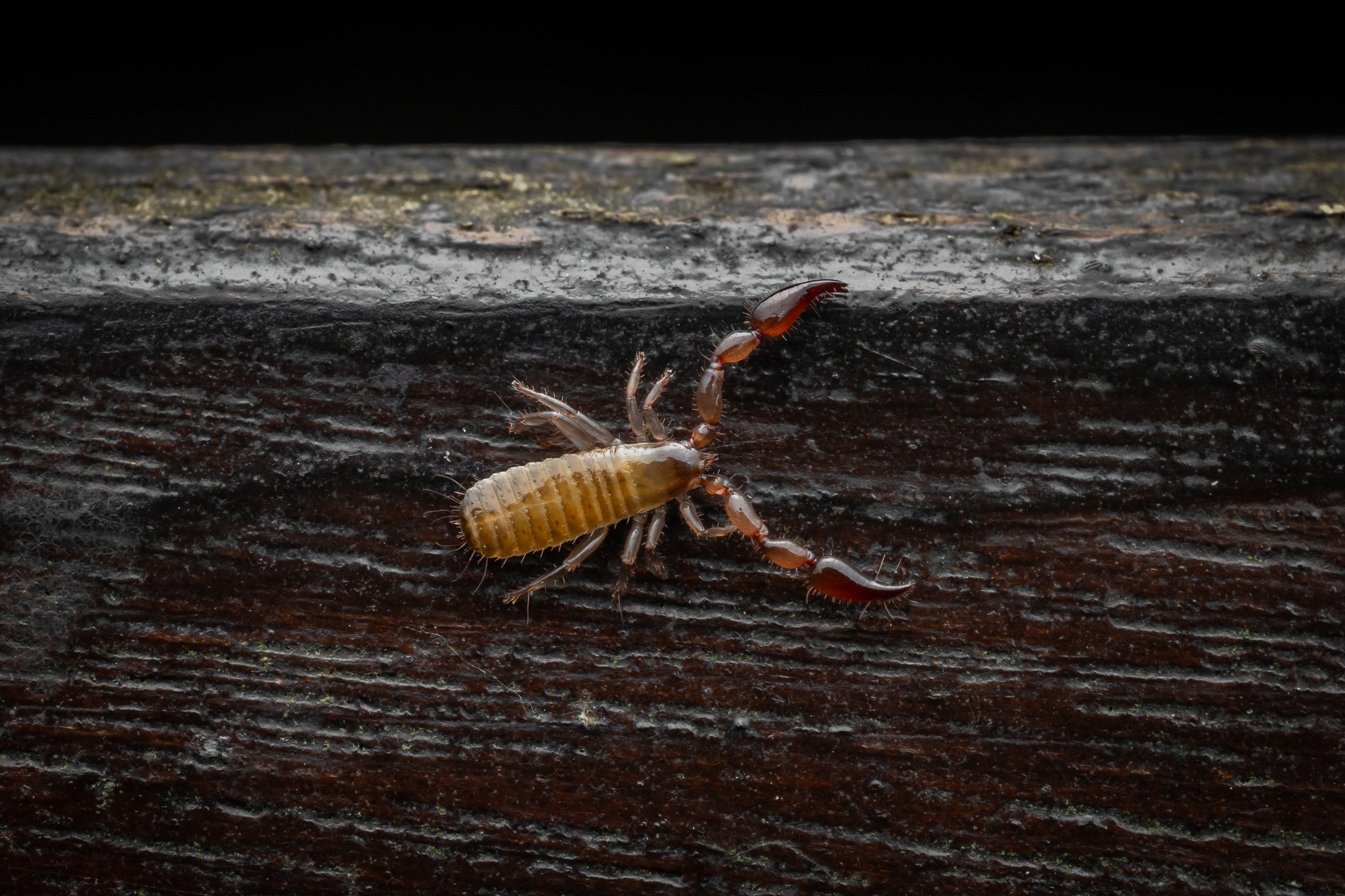 Photo courtesy of Daryl Tan.
Photo courtesy of Daryl Tan.
They earned their name because they have pincers like scorpions do, but lack a tail with a stinger at its end.
Instead, the venom is injected into its prey through its pincers.
They typically prey on invertebrates like springtails, mites and other small insects.
Pseudoscorpions are active hunters, stalking among leaf litter or deadwood, and will ambush their prey by hiding in crevices within trees or rocks.
They are typically about 2mm to 8mm in size.
By comparison, Weaver ant workers average around four-tenth of an inch, or about 10mm, in length.
Top image courtesy of Daryl Tan
If you like what you read, follow us on Facebook, Instagram, Twitter and Telegram to get the latest updates.

